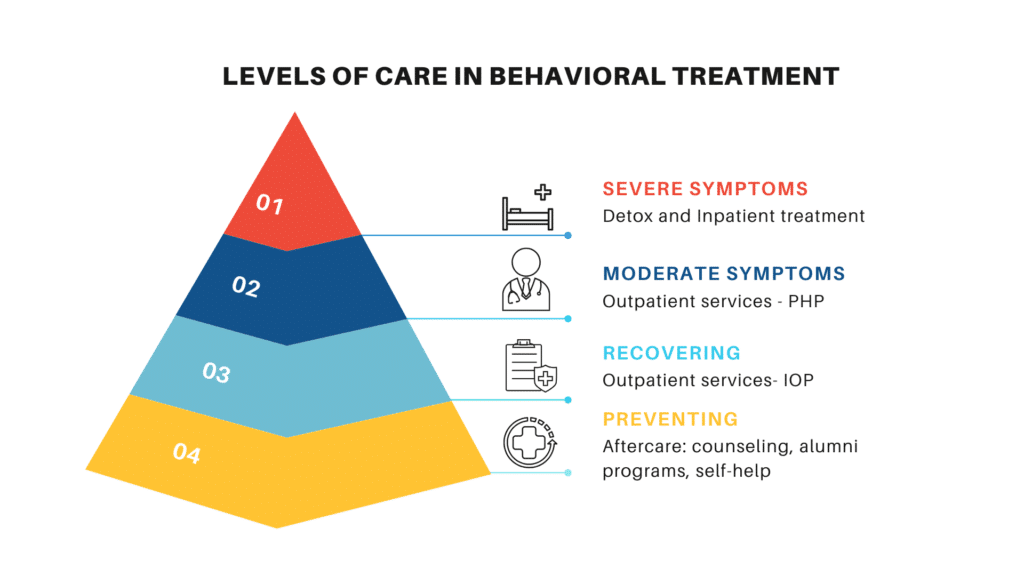What Does IOP Stand For?

In healthcare, the IOP acronym carries two common connotations. Most frequently it stands for Intensive Outpatient Program—a structured, non-residential level of behavioral-health care used in mental health and addiction treatment.
In ophthalmology, IOP means Intraocular Pressure, the fluid pressure inside the eye. The quickest way to tell which one you’re seeing is to check the context: behavioral health vs. eye care.
What Does IOP Stand For? IOP as Intensive Outpatient Program (Behavioral Health)
When “IOP” appears on a mental-health or addiction-treatment page, it almost always refers to an Intensive Outpatient Program.
What Does IOP Stand For? A non-residential treatment level with a preset weekly schedule—typically multiple days per week for several hours each day. IOP bridges the gap between once-weekly therapy and inpatient/residential care.
What happens in IOP:
- Evidence-based therapies (e.g., CBT/DBT), skills training, psychoeducation
- Group sessions plus individual therapy and, when appropriate, family/partner work
- Case management, relapse-prevention planning, and coordination with medical/psychiatric services
- Daytime or evening tracks to fit work or school
Who it’s for: People who need more structure than standard outpatient therapy but can safely live at home—often stepping down from inpatient/residential, or stepping up when weekly therapy isn’t enough.
Typical phrases that signal this meaning: “IOP schedule,” “PHP vs. IOP,” “evening IOP,” “step-down to IOP,” “intensive outpatient treatment.”

What Does IOP Stand For? IOP as Intraocular Pressure (Ophthalmology)
In eye care, IOP stands for intraocular pressure, measured in millimeters of mercury (mmHg) using tests like tonometry. IOP helps clinicians assess glaucoma risk and monitor treatment.
What Does IOP Stand For? The pressure created by fluids inside the eye. While many references cite a common range around 10–21 mmHg, “normal” varies by person; some people develop optic-nerve damage below 21 (normal-tension glaucoma), while others tolerate higher readings.
Where you’ll see it: Eye-exam notes (“IOP 17 mmHg OU”), glaucoma education, post-operative instructions, urgent eye-care documentation.
Typical phrases that signal this meaning: “tonometry,” “mmHg,” “optic nerve,” “open-angle glaucoma,” “pressure lowered with drops.”
How Santa Clarita Behavioral Health Can Help With IOP
If your search for “IOP” about behavioral health, Santa Clarita Behavioral Health can help. We offer adult Intensive Outpatient Program (IOP) services with morning, midday, and evening tracks—available in person at our Santa Clarita center (Los Angeles area) and via secure telehealth anywhere in California.
If, instead, you meant “IOP” related to Intraocular Pressure (ophthalmology), you’ll need an eye-care provider. Schedule a comprehensive exam with a board-certified ophthalmologist or optometrist and ask about tonometry to measure eye pressure. If you experience sudden eye pain, vision changes, flashes/floaters, or severe headache, treat it as urgent and seek immediate care at an eye clinic or emergency department.


